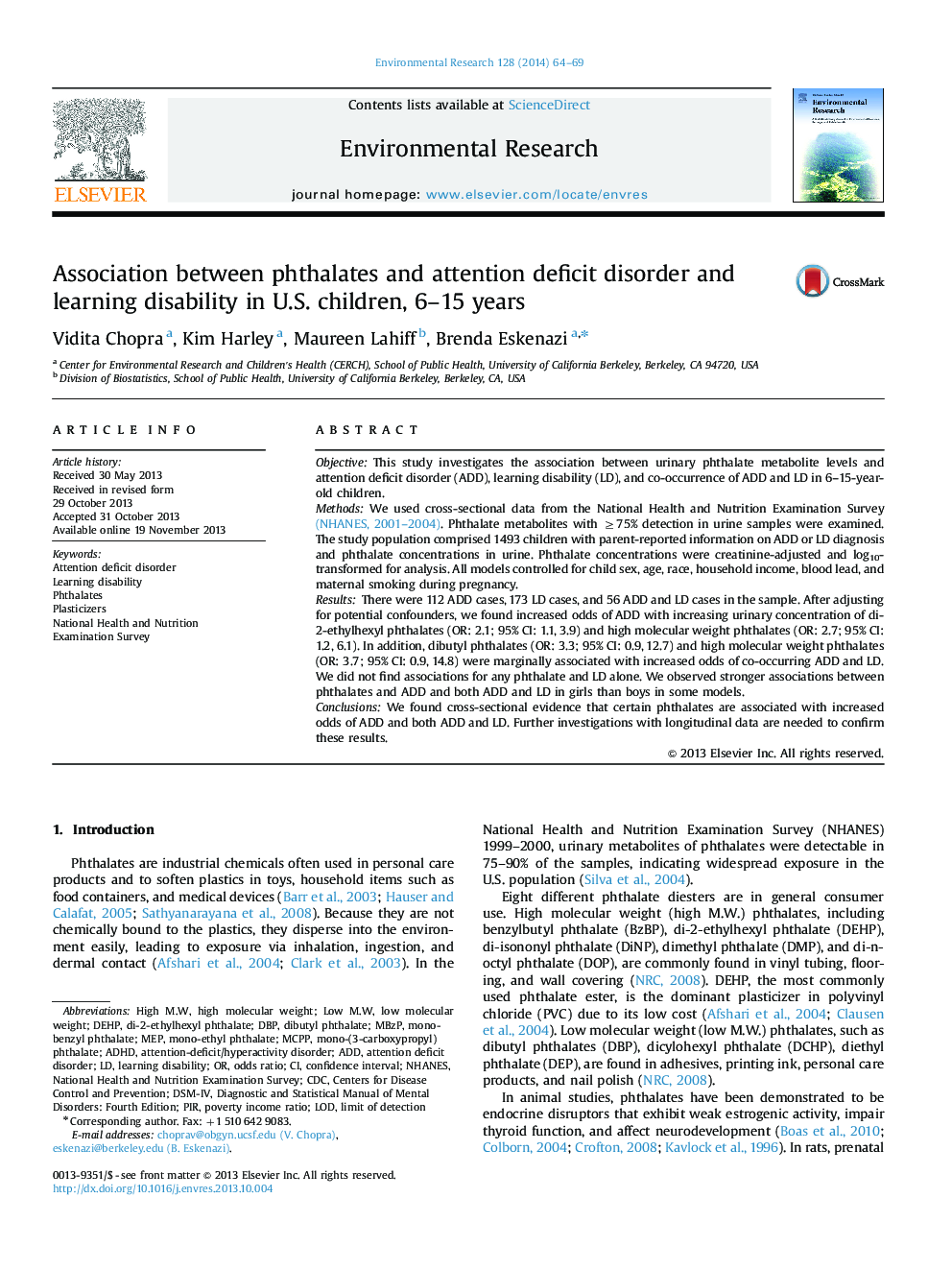| کد مقاله | کد نشریه | سال انتشار | مقاله انگلیسی | نسخه تمام متن |
|---|---|---|---|---|
| 4469929 | 1622573 | 2014 | 6 صفحه PDF | دانلود رایگان |
• We investigated childhood phthalate exposure in NHANES.
• Our outcomes were attention deficit disorder (ADD) and/or learning disability (LD).
• Certain phthalates were associated with increased odds of ADD and ADD with LD.
• None of the phthalates were associated with LD alone.
• Associations were stronger in girls than boys.
ObjectiveThis study investigates the association between urinary phthalate metabolite levels and attention deficit disorder (ADD), learning disability (LD), and co-occurrence of ADD and LD in 6–15-year-old children.MethodsWe used cross-sectional data from the National Health and Nutrition Examination Survey (NHANES, 2001–2004). Phthalate metabolites with ≥75% detection in urine samples were examined. The study population comprised 1493 children with parent-reported information on ADD or LD diagnosis and phthalate concentrations in urine. Phthalate concentrations were creatinine-adjusted and log10-transformed for analysis. All models controlled for child sex, age, race, household income, blood lead, and maternal smoking during pregnancy.ResultsThere were 112 ADD cases, 173 LD cases, and 56 ADD and LD cases in the sample. After adjusting for potential confounders, we found increased odds of ADD with increasing urinary concentration of di-2-ethylhexyl phthalates (OR: 2.1; 95% CI: 1.1, 3.9) and high molecular weight phthalates (OR: 2.7; 95% CI: 1.2, 6.1). In addition, dibutyl phthalates (OR: 3.3; 95% CI: 0.9, 12.7) and high molecular weight phthalates (OR: 3.7; 95% CI: 0.9, 14.8) were marginally associated with increased odds of co-occurring ADD and LD. We did not find associations for any phthalate and LD alone. We observed stronger associations between phthalates and ADD and both ADD and LD in girls than boys in some models.ConclusionsWe found cross-sectional evidence that certain phthalates are associated with increased odds of ADD and both ADD and LD. Further investigations with longitudinal data are needed to confirm these results.
Journal: Environmental Research - Volume 128, January 2014, Pages 64–69
